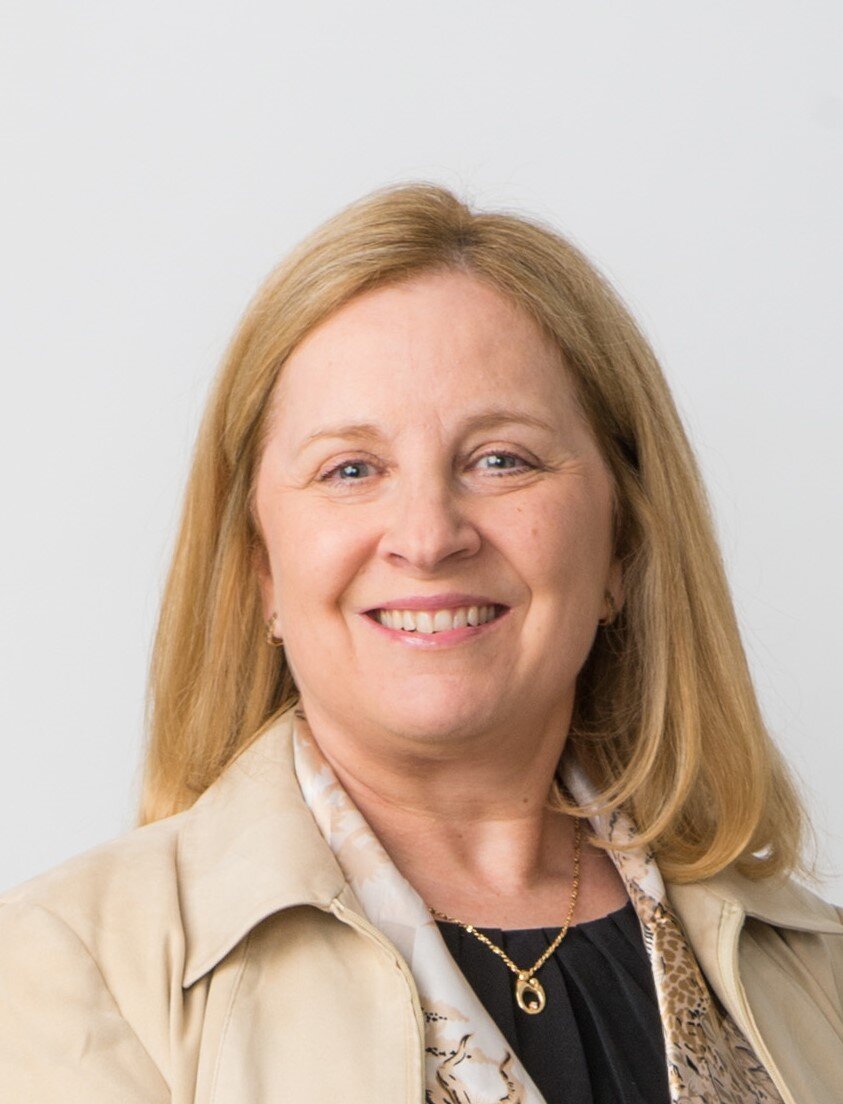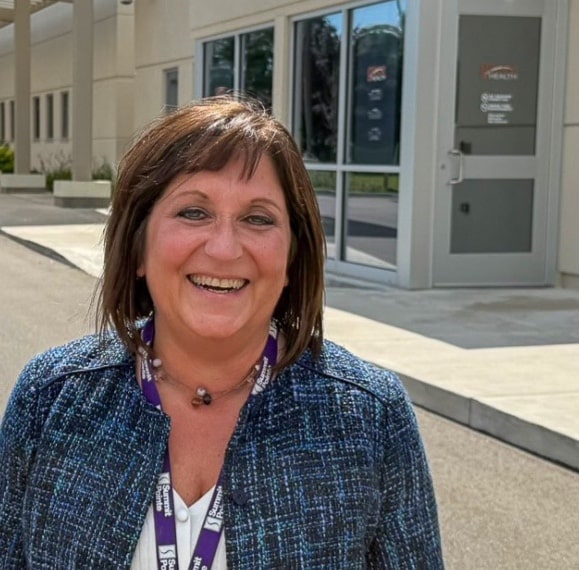
Those taking five or more prescriptions, over-the-counter medications, or supplements concurrently can be at risk for serious combined side effects.
This article is part of State of Health, a series about how Michigan communities are rising to address health challenges. It is made possible with funding from the Michigan Health Endowment Fund.
When Michelle Moccia cares for patients admitted to the senior emergency department at Livonia’s Trinity Health St. Mary Mercy Hospital, she always considers the possibility of medication side effects. Moccia, the department’s program director, finds that many elders she treats take eight to 10 prescription medications, along with numerous over-the-counter remedies. The medical term for this phenomenon is polypharmacy, defined as a person using five or more prescription medications, over-the-counter medications, or supplements.

“Medications have a detrimental effect on our older adult population,” she says. “I ask patients, ‘How do you remember to take your medications? What happens if you forget?’ That gives me a really good insight into what they are doing.”
As Michigan’s flagship hospital for the age-friendly health care movement, St. Mary Mercy embraces a framework that considers mentation, mobility, medications, and what matters most to the patient. Moccia believes that medications are the key consideration.
“Medications can actually affect mentation and mobility,” she says. “Older adults really need to understand why they are taking their medications and how important it is to adhere to directions. And they need to have a conversation with their primary care provider if they start experiencing symptoms they think could be related to the medication.”

A Lown Institute study found 750 older Americans are hospitalized daily due to serious medication side effects. With each additional drug taken, risks of serious reactions increase 7-10%. More than 40% of older Americans take five or more prescription drugs. Nearly 20% take more than 10. Add in over-the-counter medications, and that number rises to 66%.
“Polypharmacy is not necessarily a problem. For many, those medications are essential,” says Dr. Catherine Baase, board chairperson of the Michigan Health Improvement Alliance (MiHIA). “Medication overload is … the concept that polypharmacy is posing greater risks than benefit.”
Baase cites three key reasons for medication overload: a culture that prescribes a pill for every illness, clinicians struggling to prescribe or de-prescribe appropriately, and a fragmented health care system where people have multiple providers.
“The number of people on multiple medications has increased 200% in the last 20 years,” she says. “Millions of people are at grave risk by their use of medications and overprescribing, particularly seniors.”
For all ages, warning signs include confusion, weakness, fatigue, dizziness, falls, stomach upset, sleepiness, dry mouth, constipation, and difficulty with urination. While side effects vary from one person to the next, elders may mistakenly ascribe them to advancing age, never suspecting that medications are to blame. Other side effects can be much more serious. Dr. Sasha Savage, a family practice physician at MidMichigan Health in Midland, shares what can happen when a person taking ACE inhibitors for high blood pressure takes a common antibiotic.

“If they go to the doctor and have a little infection, they might be prescribed Bactrim. … They may plead with the doctor: ‘I need that antibiotic.’ And the doctor may move a little quickly,” Savage says. “Two days later, they are hospitalized because their potassium goes through the roof. When that level goes too high, it can cause a deadly heart rhythm.”
Savage adds that herbal supplements can also cause problems. For example, ginkgo, taken to boost brain function and circulation, compounds the effects of blood thinners, like warfarin. The result can be dangerously excessive bleeding.
“The elderly are so profoundly impacted by polypharmacy,” Savage says. “When you’re young, your organs work perfectly as they are supposed to. By the time you’re 70, you have lost half of your kidney function. Before, if you took ibuprofen or Aleve, it never caused a problem. When you’re 70, these profoundly affect you. You may get stomach ulcers, bleeding, stroke, or heart attack. As organ function naturally declines, these medications that were once largely safe are now far more risky.”
Care team approach reduces risks
Judy Benkeser is a nurse at a Michigan Medicine primary care practice in Ann Arbor. A care navigator, she tends to patients with multiple complex medical issues or psychosocial barriers. Many are prescribed multiple medications. Benkeser helps ensure that their medications are not causing negative side effects.
“We see people who have no visible or notable side effects or mild symptoms all the way up to life-threatening impacts,” she says. “With the elderly population, we really have to be very cautious with any medication that is sedative or can impair cognition.”
Benkeser has patients bring all of their medications to their appointment, especially if they have cognitive or vision problems. She has seen patients with prescriptions from several providers or leftover medications from well-meaning neighbors.
“If you are taking three or more medications and have multiple providers, it’s always a good idea to bring all your pills in once or twice a year,” she says. “Ask the doctor, ‘Are they all correct? Are we all on the same page?'”
When patients cannot bring in their medications, Benkeser has enlisted a local pharmacist to visit them at home to come up with a comprehensive list. While electronic records help, these usually only contain records from within the individual health care system — not from independent health care practices.
“If you get your prescription from Dr. Smith, who has a freestanding practice, I may not see what he’s prescribing,” Benkeser says. “We also have concerns with pills prescribed by psychiatrists or community mental health providers, as these require a secondary level of release of information. Often these drugs have interactions that can cause side effects.”
Both Benkeser and Moccia warn elders away from over-the-counter sleep medications, as they can cause side effects that mimic dementia and impair balance, raising the risk of falls.
“There should be a specific warning for elderly people on over-the-counter sleep medications,” Benkeser says. “I tell them those are to be avoided at all costs. If you are having difficulty sleeping, bring that up to your physician. We do have safer options for people who need sleep.”
While data has not confirmed that the COVID-19 pandemic has increased medication overload, Benkeser fears that elderly patients shifting to telemedicine may be at increased risk.
“There’s been a huge push to doing virtual visits. That’s a really valuable tool that has helped lots and lots of people, but maybe not those outlier, vulnerable populations,” she says. “These more vulnerable people are probably not being well served and it probably has increased risks for polypharmacy.”
Creating a safer polypharmacy future
While some providers, like St. Mary Mercy and Michigan Medicine, have programs in place to reduce polypharmacy risks, no national or state programs comprehensively address polypharmacy. That’s why MiHIA is creating a framework for addressing overprescribing, identifying opportunities for de-prescribing, and raising awareness of medication-induced toxicities and nutrient deficiencies. In collaboration with the Great Lakes Bay Region’s Transforming Health Regionally in a Vibrant Economy (THRIVE) collaborative, MiHIA’s Patient Safety Task Force is considering ways to raise awareness about polypharmacy risks, improve organizational policy and practices, and limit pharmaceutical industry promotional activities like physician incentives, free samples, and direct marketing to consumers. One approach is the care team model, like the one Benkeser oversees at her practice.
“Care team members are brought in because of their specific expertise. They may have a primary care provider, nurse practitioner, and dietitian. Pharmacists are another addition,” Baase says. “Pharmacists can carry out a special role, doing this analysis of medications a person is on and giving recommendations for adjustments.”
The task force is also advocating for medical, health, and nursing schools to include material on reducing risks of polypharmacy as part of their curricula.
“Because we haven’t had a systematic approach, we are trying to ask, ‘What are the things we can do to really change this?’ We do know there is interest. We are in conversations with the Michigan Medical Society and the Michigan Pharmacists Association,” Baase says. “Things are really percolating.”
“We humans are complex,” says Savage, who also works with THRIVE. “These bodies are miraculous and usually work pretty darn well. But there are a complex set of nutrients, minerals, vitamins, and internal workings. So the moment you take a multitude of medications, you impact that delicate balance.”
A freelance writer and editor, Estelle Slootmaker is happiest writing about social justice, wellness, and the arts. She is development news editor for Rapid Growth Media, communications manager for Our Kitchen Table, and chairs The Tree Amigos, City of Wyoming Tree Commission. Her finest accomplishment is her five amazing adult children. You can contact Estelle at Estelle.Slootmaker@gmail.com or www.constellations.biz.
Michelle Moccia photo by Doug Coombe. Catherine Baase and Sasha Savage photos courtesy of MiHIA.




